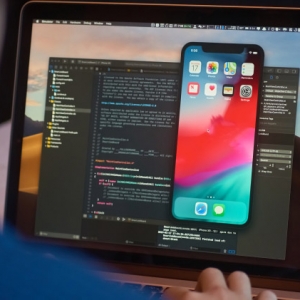If you're considering cross-platform development for your app idea, hiring skilled Flutter developers in India can be a strategic choice. Flutter, Google's UI toolkit, offers a robust solution for developing natively compiled applications for mobile, web, and desktop from a single codebase. India, with its pool of talented Flutter developers, provides a cost-effective option for turning your app vision into a reality with efficiency and innovation.
If you're considering building a mobile app like the Hilo application, which demands seamless performance and cross-platform compatibility, exploring frameworks like Flutter and React Native becomes crucial. These open-source platforms offer developers the advantage of reactive performances, making it easier to create reusable and consistent user interface elements across various devices. Understanding the strengths and weaknesses of these frameworks is essential for making informed decisions in your app development journey.
What is Flutter?
Flutter is also an open source Software Development Kit developed by Google for designing premium native interfaces on IOS & Android. It uses Google’s language Dart. Similar to JavaScript, it has an optional built-in type of safety support. It works with existing code which has been created by participants and organizations around the world. When considering diving into mobile app development, it's essential to choose the right team to bring your vision to life. If you're looking to hire app developers USA, finding experienced custom software developers can be a key factor in ensuring the success and cost-effectiveness of your project.
What is React Native?
Facebook created React Native as an open source framework for cross-platform mobile applications. It was launched to create a real and native rendering mobile app. As a mixture of JavaScript and XML-esque markup language, it comes with the potential to manage both iOS and Android app with a single code base.
Both of these frameworks come with their own set of advantages and limitations. We have categorized into 10 points. Let’s check a detail Flutter vs. React Native comparison for a bright idea.
1. Release date
Facebook released React Native in 2015, so, by now, it is already a mature tool and has a huge community.
Whereas, Google started Flutter in 2017 and slowly started seeing the colossal adaptation.
Flutter & React Native search on Google trends
Stack Overflow representation of React Native & Flutter questions
2. Stateful hot reloading
Hot reloading is something in which developers write codes, save the code, and hit reload on a mobile app (react mobile app) and reload like a webpage.
Both Flutter and React Native includes hot reloading, which is super fast compared to how other native apps recompile in XCode and Android Studio. If there is any error, developers can experiment and fix bugs in no time.
However, it is easy to make changes to a Flutter app while it is running.
3. Language
Flutter uses Dart as a programming language which is easy to understand for Java developers as it supports most of the object oriented concept.
React Native uses JavaScript as a programming language. A vast community of the programmers are already working on JavaScript so migrating into the React Native is much easier for them rather than learning a whole new Dart programming language.
4. Component
In Flutter, developers get tons of open source components designed by Google team. It comes with everything needed to quickly render the UI, including widgets for material design and Cupertino.
Whereas in React Native, developers get many built-in components as the core framework offers just UI rendering and device access APIs. However, developers can create any of the components by using third-party libraries.
5. Documentation
Flutter documentation is very well-written which developers can easily understand. Though this doesn’t mean that the flutter documentation is impressive, but in React Native, the developers have to look into third-party documentation.
6. App look
How closely your app looks like the native app designed on swift or java?
Though there are components which looks like iOS, a lot of components developed with Flutter looks like material.
In the react native, once the developers write the components, it automatically adopts for either iOS or Android, and developers don’t have to write code any more. Your app looks very closely like its native app
7. Community
Huge tech companies back both frameworks. However, Google is doing many activities to grow Flutter’s community that includes an event like Flutter Live.
React Native came up first in the market, so by now, it enjoys excellent support of a mature community of developers and contributors.
8. Industry adaptation
The industry has slowly started adopting Flutter; however, it has to come up with impressive features to make a mark.
On the other hand, many companies are already using React Native. Industry adaptation is quite huge for React Native; this also builds up a lot of job market in React Native world.
Check some of the popular apps made on both of these frameworks:
9. Stability
Though established tech communities well manage both of the frameworks. Recently, Google launched Flutter 1.2 which comes with improved tools that offer a more stable performance than the previous alpha version.
React Native since its inception got popular among the developers and valued for its reliability in the industry. It is quite a stable framework from earlier.
Summarizing the attribute differences
Which framework suit your needs?
Flutter allows overwriting codes, so when your developer plans to recycle codes, flutter allows reusability. It also allows easy testing of your project. There are a lot of third-party packages for Flutter, and the increasing community discussion regarding the framework is beneficial. With more than 30k Github stars, it is making its mark on the cross platform mobile app development.
Considering the attributes, React Native offers the best result combining the qualities of both hybrid and native frameworks. Though it allows to reuse its code, but restricted to a few components. It comes with more third-party packages that improve the usability of the app by putting some dynamic features. 68k Github stars, including JavaScript and Library React, makes React Native a smart choice for mobile app development.
The choice of frameworks is generally made depending upon the project type, its requirement, owner’s budget, deadline, and many more factors. You must leverage the support of your mobile app development team to find the best solution for your app idea.
Well, in the meanwhile you can check our other blogs for better software knowledge.
Also read: React vs Ionic for a better understanding.






